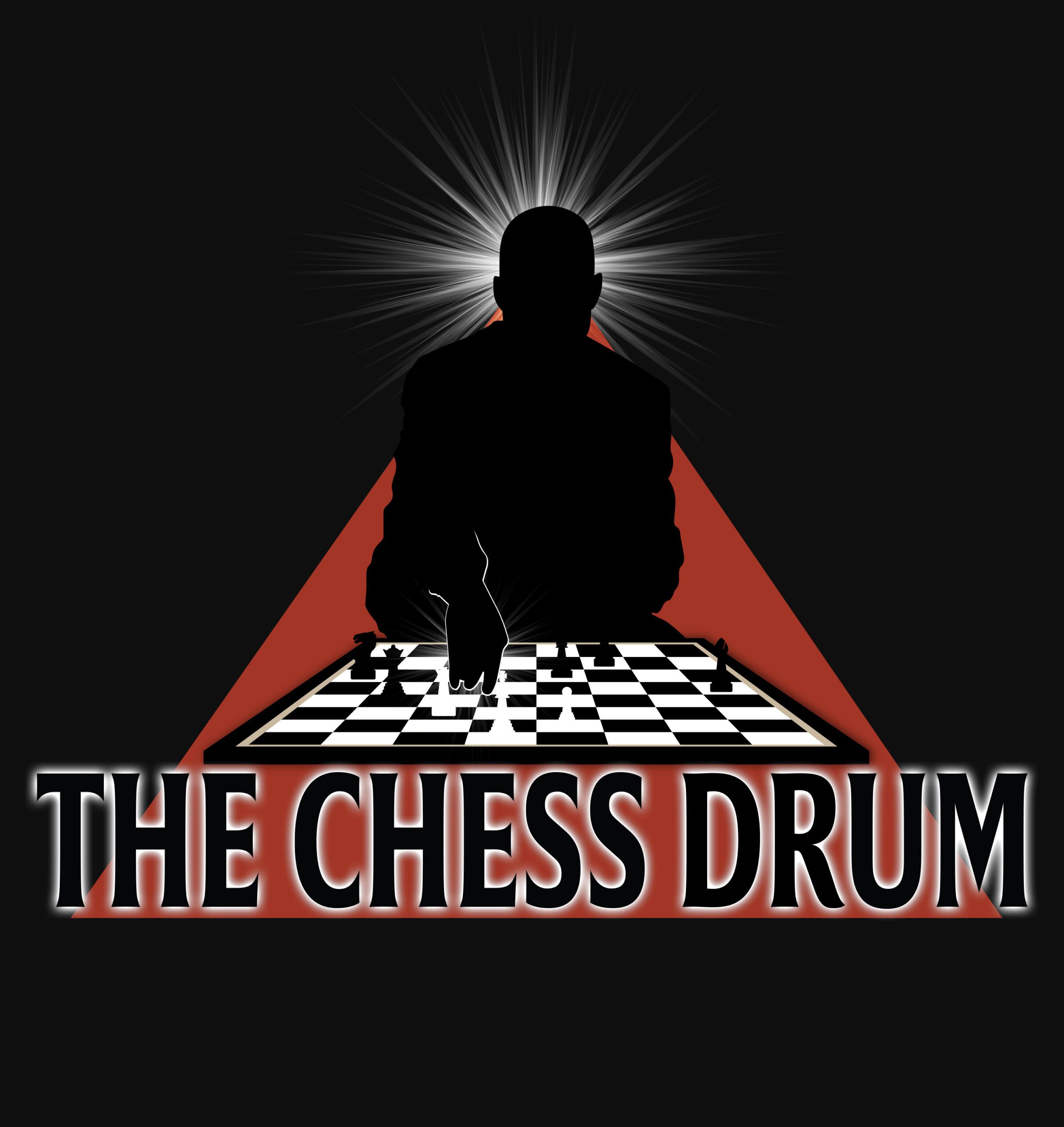New in Chess (2015/4)
.jpg)
If you have not gotten a copy of the latest New in Chess, you are in for quite a thrilling ride. The magazine had several controversial pieces including vituperative editorial letters about Bobby Fischer. These letters seem to spout personal beliefs and opinions of the champion, but did little to discuss any points in the article, “Bobby Fischer: Facing His Dark Side”. The first letter was submitted anonymously “to avoid personal reactions”. Interesting.
There was also an interesting letter written in response to Nigel Short’s article two issues ago from an American college student. Maya Marlette wrote her stance at length, but then added some of her own anecdotal experiences. While she has not been active in a number of years, she cites overt sexism, the lack of role models and societal pressures as reasons for the gender gap in chess. Of course, there are other factors as well.
It is strange that the writer did not specifically mention any of the great women champions as role models… and only a cursory mention of the Polgars. In fact, there are female role models in chess including 30+ GMs and a history dating back to Vera Menchik and living legend, GM Nona Gaprindashvili.
In fact, if you are in America, GM Irina Krush is quite a role model and the world’s strongest female player GM Hou Yifan is inspiring a generation of girls. Former champion GM Alexandra Kosteniuk has been a strong promoter of women’s chess for over a decade. If you want a “combo” role model, attorney and entrepreneur FM Alisa Melekhina comes to mind. In fact, they had even fewer role models!
While it is ideal to have a role model with common characteristics, it does not always have to be so. We are talking about chess which is not gender-specific. Just as GM Judit Polgar was a favorite player and role model for many men (myself included), it is also fine for a woman to have a male role model in chess. Marlette did not provide suggestions on remedying these issues, but it is a debate that will continue.
“Aggression – essentially the effect of a sex hormone, testosterone, working on the mental organ – might be another factor giving men the edge. In most cases biology is paramount.”
~GM Nigel Short on the gender gap in chess.
Almost on cue, Short wrote yet another gender-baiting article in this issue on the topic titled, “The Beautiful Mindfield”. In this article he rebuts many of the critics of his article “Viva la Difference” and castigated them for not reading his article. While he could have focused solely in the issue at matter, he took umbrage to target Susan Polgar’s simultaneous record… again. It was an unfortunate beginning to the article. Even those who did read the previous article took issue with his tangential attack on Polgar.
In this piece, Short tackled the genetic question once again citing the biological differences with men and women including the brain dissimilarities. He seemed to offer confirmation to his previous article plus a rebuttal for various news outlets and websites harpooning him with many epithets. He seemed to be offering a simultaneous rebuttal to Marlette’s letter.
“Men and women have such dissimilar brains it is implausible to expect their cognitive functions to be identical. For a start, men have roughly 6.5 times more grey matter; women have 9.5 times more white matter. The latticework of synaptical connections between the two hemispheres is denser in females than in males. Sexual dimorphism is noticeable in the hippocampus, the hypothalamus and the amygdala. Male brains are also 10% larger on average (certain malicious editors cited this statement of fact as evidence of my sexism – pretending that I either don’t know or understand that it is closely correlated to body size). Indeed sex differences in the encephalon are observable even in foetuses, as early as 26 weeks. Circumstantial evidence suggests women are inherently less interested in the game. Given how early this divergence starts, the phenomenon is unlikely to be explained by nurture. Aggression – essentially the effect of a sex hormone, testosterone, working on the mental organ – might be another factor giving men the edge. In most cases biology is paramount.”

One could argue that Short is not a medical practitioner, but he could have easily gleaned this information from any number of credible medical sources (like here). If we agree that there are genetic differences in brains between men and women, then what factors have accounted for the success in the Polgars, (including Judit) and Hou Yifan? This would be more interesting to study. How did they do it? All would have been saddled with the same aforementioned obstacles, but in the above cases, family support was paramount.
While Short makes a distinction between citing this data for analysis and using it for subjugation of girls/women, he will no doubt get many detractors who see this as yet another ill-conceived response. Others will write the entire episode off as a “stalemate”. He even ventures into another explosive area when including analysis of homosexuality and chess. Short’s article is quite a roller coaster that will likely draw more enemy fire. Interestingly enough, Dylan Loeb McClain constructed a supplementary chart illustrating the gender gap in chess over the last 15 years.

Continuing with the controversial theme of this issue, there is the 2015 U.S. Championship in which Hikaru Nakamura and Irina Krush emerged as overall and women’s champions, respectively. Nakamura’s return to the championship was the highlight and his pending rivalry with Wesley So was highly anticipated. Alisa Melekhina reported on the event and included some puzzles showing key positions of games. In addition, the article unfurled the talent of new American hopeful, Sam Sevian whose win over So was epic.
Then there were the zingers. There was Nakamura’s self-criticism on his play as “Mickey Mouse” which was admittedly taken too seriously by spectators. According to the article, Nakamura stated that his comment was in reference to Carlsen’s jab of him winning “Mickey Mouse” tournaments. However, given Nakamura’s recent qualification in FIDE Grand Prix and 3rd place showing in Norway (along with Carlsen’s collapse), the American destroyed the Disney reference without uttering a word.
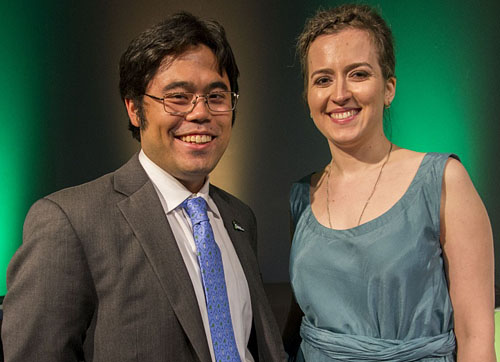
Current U.S. champions Hikaru Nakamura and Irina Krush
Photo by Lennart Ootes.
The marquee event was marred by a forfeiture of Wesley So due to note-taking. He had been warned on two other occasions and after Varuzhan Akobian complained, he was forfeited to the shock of the chess world. When this incident occurred, the news spread around the chess world raising a host of discussions on FIDE rules and on arbiter’s discretion. Hundreds of comments were offered. It was a sad incident as So has been a likeable personality with a seemingly bright future. However, this issue covered juicy details of a deeper controversy.
“Leave us alone. I am trying to have a good career, trying to be one of the best chess players in the world. Which by itself is very hard, but with all these distractions it’s virtually impossible.”
~GM Wesley So when asked about FM Paul Truong
When I saw the cover story of New in Chess and read the quote, “My relatives and Paul Truong ruined my U.S. Championship,” my excitement plummeted. This controversy made the cover of New in Chess? Despite a beautiful photo of the ebullient Filipino, the angry quote would certainly make it must-reading. How could a smiling So be angry?
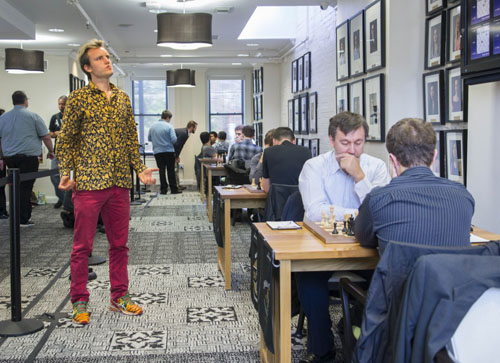
In the background Tony Rich is seen explaining his forfeit ruling to GM Wesley So. GM Timur Gareev and other players are trying to figure out what has happened. Truly epic! Photo by Lennart Ootes.
The event had happened in April and raged in the media for a solid month. As the forfeiture issue was trending in social media, the public begin to learn about So’s personal affairs with his biological family and host family in Minnesota. The vitriolic exchanges between So and his relatives were tough to read and devastated the Filipino community. They had already lost their native son who switched federations.
In my view, such a personal family situation should not become public discussion. It becomes a dicey business to be a vehicle of a family dispute. A magazine can put itself in tremendous legal liability, especially if there are unsubstantiated comments, mischaracterizations and mistakes. The editorial staff made the call on running it as the cover story and it will certainly receive quite a bit of attention.
Dirk van ten Geuzendam interviewed So and his host mother Loftis Key during the Shakmir Memorial for Vugar Gashimov in Shakmir, Azerbaijan. There were a number of points made in the article including his Filipino family’s migration to Canada, his time at Webster, how he met his adoptive mother, his religious immersion, decision to change his federation, the role of Truong in this incident, his decision to turn professional and his note-taking (which led to the forfeit). What bombshells!
In the interview, So implicates Truong as conspiring with his biological mother Eleanor So to pressure him to return to Webster University. These exchanges were aired out in the social media such as Facebook and chess blogs worldwide. In addition, there were comments implicating Truong and his plot to undermine So after leaving Webster. Comments were made about the private relationship between Polgar and Truong, a married couple. These comments (which included a sidebar about Polgar) appeared very inappropriate.
Without going into further detail (you should buy a copy), the entire interview may leave one to believe that there is something totally wrong in this entire scenario and in the So family. However, it should be sorted out privately by Wesley So, his biological family and adoptive family. Unfortunately, the staff of New in Chess may have to prepare for a battle with plenty of litigious language.
The second half of the magazine eschewed controversy and highlighted the meteoric rise of Wei Yi, the Chinese sensation who is improving rapidly. It is a candid biopic about a player who may be dubbed the strongest Chinese yet… even despite the rise of “veteran” 22-year old Ding Liren and 21-year old Yu Yangyi. It is not often that we read about Chinese players, but New in Chess has done features in the past and this is a wonderful read.
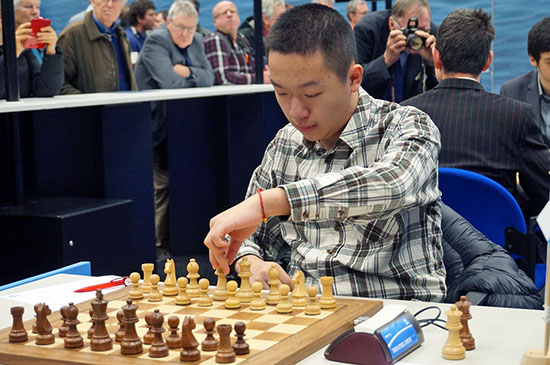
GM Wei Yi dominating at 2015 Tata Steel Challengers with 10½/13!
Photo by Nadja Wittmann (ChessBase).
Finally, Nigel Short was in the spotlight again as he was set to play an exhibition match against Garry Kasparov in St. Louis. Dubbed, “Battle of Legends,” it was a match of thrills and spills and produced flashbacks of the 1993 FIDE defection match. Of course, Short was already under fire for making comments about gender equality in chess. Combined with the stress of that episode and jetlag after his trip from Thailand, he faced an exhausting uphill battle. It turned out to be a mountain far too steep for the energy he had in the tank.
Kasparov wrote the article which gave a unique perspective of where the retired champion is in his chess thoughts. His mind was still keen in his annotations, but unlike his voluminous variations of the past, these annotations provided more commentary and were quite instructive. He choose two very exciting games. One of the games was an exciting Richter-Rauzer, a must-see! Short was throttled 8½-1½ and those who were upset at his comments showed immense glee at his demise.
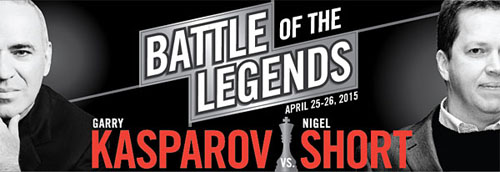
Kasparov meted out a serious flogging in the match.
To continue with the American-themed issue, there were additional segments including Carlsen’s blindfold exhibition in New York, a new book on Bobby Fischer and Jan Timman’s article, “Two Americans” on the qualification of Fabiano Caruana and Hikaru Nakamura in the 2016 Candidates Tournament. Both scored well in Khanty-Mansiysk and won the berths. American Samuel Sevian is the subject in “Just Checking”. Very interesting… a boy who seems to be maturing beyond his years.
CONTENTS
- Your Move
- Men vs. Women
- Blitz Bliss
- NIC’s Café
- Carlsen Shakes Rivals
- A Beautiful Minefield
- Who Else?
- Fair & Square
- Interview: Wesley So
- Maximize Your Tactics
- S.O.S.
- Reaching the Summit
- Maximize Your Tactics
- Profile: Wei Yi
- Attack. Always!
- Closed Eyes, Open Mouths
- Sadler on Books
- Two Americans
- Parimarjan’s Chess Gym
- Just Checking
Link: https://www.newinchess.com/Shop/ProductDetails.aspx?ProductID=805

